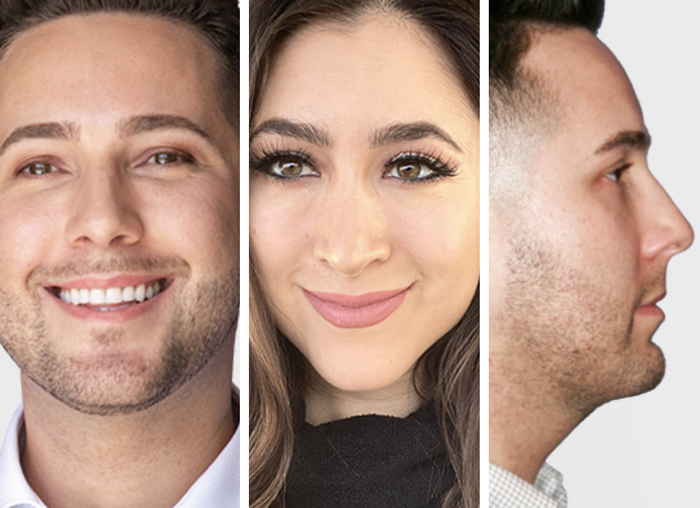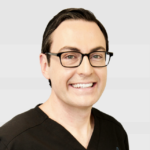Heavy or droopy upper eyelids can make you look tired – even after a great night’s sleep! This is a common problem as we age, with thin, “crepey” skin obscuring the upper eyelid crease, making it difficult to apply eye makeup, and in severe cases, limiting your peripheral vision. Fullness in the upper eyelids is not always related to age, however, and actually can be hereditary. This issue may be related to a variety of anatomic factors, including loose skin, excess adipose tissue (fat), or even a heavy forehead or brow.
When there is too much skin or fat, Dr. Ransom can remove this tissue with a simple surgical procedure called an upper blepharoplasty (upper eyelid lift). This can be performed with local anesthesia and may be combined with other aesthetic surgery or non-surgical procedures such as rhytidectomy (facelift).
Explore our
Patient Gallery
*Actual patients in photos

In some patients, the appearance of drooping upper eyelids is related to a heavy or sagging forehead and brow region (brow ptosis). This problem is often referred to as “lateral hooding” because the skin of the sides of the forehead weighs down the upper eyelids more significantly on the lateral part (toward the ears), and creates a curtain or a fold over this area. For these patients, a browlift is indicated, either alone or with an upper eyelid lift. Treating the brow and forehead region, along with the upper eyelids, ensures a natural-appearing and long-lasting result.
Who is a candidate?
Anyone with heavy upper eyelids, loose skin, or tired-appearing eyes may be a candidate for an upper eyelid lift. During your consultation, Dr. Ransom will closely examine your upper eyelid area, including skin laxity, position at rest, movement, and eye closure. In some cases, the unaesthetic appearance of the upper eyelids is related to issues with the eyelid elevating muscles (levator palpebrae superioris); when this happens, the diagnosis is blepharoptosis, and the treatment may include a ptosis repair with or without an upper eyelid lift. In other cases, the sagging or baggy appearance of the upper eyelids is related to a heavy or falling forehead and eyebrow region; when this happens, a brow lift may be indicated, with or without an upper eyelid lift. Dr. Ransom is happy to discuss these issues in detail with you during your consultation.
Frequently Asked Questions
Please note that all patients are different and individual healing times and results may vary. The statements regarding procedures and recovery made here are general rules.
Immediately following the surgery, the upper eyelids will have some bruising and swelling. In most cases, this is relatively mild. Swelling generally reaches a maximum by the second day after the surgery, and then begins to recede rapidly. This process typically takes a few more days. Patients are encourage to keep the head elevated and use around the clock cold compresses during this time. Most patients are more than comfortable with one week away from work. After the sutures are removed on the fourth day, incisions are well-camouflaged by the eyelid crease. Eye makeup can be worn after the first week, and the incisions are nearly imperceptible within a couple weeks of the procedure.
Having an upper eyelid lift will not change the shape of the eyes. In the first few days after surgery, when the area is still swollen, the eyes will look puffy and it may be difficult to see their exact shape. However, after healing, the desired effect of the upper eyelid lift is seen – a more open appearance of the eyes, without the heavy and sagging extra skin and fat that made you look tired. You will appreciate the increased brightness of the eyes, and those patients who weren’t able to wear upper eyelid makeup or mascara before the procedure will be delighted to do so afterward! Dr. Ransom would be happy to review the procedure and patient photos with you during your consultation.
Dr. Evan Ransom is an Ivy League-educated and Ivy League trained Facial Plastic and Reconstructive Surgeon. He is a Double Board Certified Head and Neck Surgeon and Facial Plastic and Reconstructive Surgery and fellowship-trained in facial plastic, reconstructive, and laser surgery. His practice is in the San Francisco Bay Area, serving patients from San Francisco, Oakland, Marin County, Palo Alto, Silicon Valley, Walnut Creek, the East Bay, and all over Northern California.
 (415) 550-1077
(415) 550-1077 San Francisco
San Francisco




